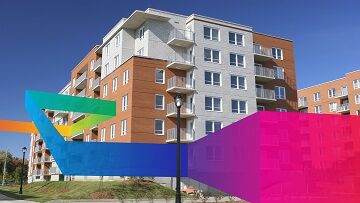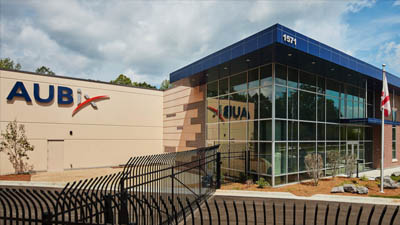 2020 has been a year of seismic changes in the way we work and live. The Covid-19 pandemic’s impact has been felt in every area of life, and it has brought new changes to venues and campuses struggling to stay relevant in a time of mass isolation. For many building owners, nice-to-have technologies have become must-have technologies in the age of Covid, accelerating technology improvements that were formerly on the back burner. Let’s look at some key trends impacting building and campus networks that we expect to see in 2021.
2020 has been a year of seismic changes in the way we work and live. The Covid-19 pandemic’s impact has been felt in every area of life, and it has brought new changes to venues and campuses struggling to stay relevant in a time of mass isolation. For many building owners, nice-to-have technologies have become must-have technologies in the age of Covid, accelerating technology improvements that were formerly on the back burner. Let’s look at some key trends impacting building and campus networks that we expect to see in 2021.
Fewer People, More Important Networks
Covid-19 changed business priorities, and with them the role of networks in buildings and campuses. In 2021, we see companies embracing remote networking as some offered employees the opportunity to work remote permanently while other companies adjusted their offices to accommodate social distancing, meaning less employees back in the office. The network that connects those remote workers with their companies has become more important than ever. With a focus on employee and customer health and safety, building owners will continue to roll out secure VPN connections and manage their networks differently.
CLICK TO TWEET: CommScope's Ben Cardwell explains what the future will hold for building and campus networks in the age of COVID-19.
Building IT and Operational Technology (OT) teams will work more closely together to ensure that they maximize efficiency and minimize the costs of running the building. This is key because every business expects to see a return on capital in their network and smart building equipment. Office space is shrinking and causing a rise in demand for Wi-Fi networks as those employees who do come to the office aren’t occupying the same spaces as before.
OT teams will continue implementing touchless access control technology and placing thermal cameras in key locations to check employee and visitor temperatures. Other systems will measure the number of people in each interior location to monitor crowd sizes, and devices like IP security cameras, LED lights and 4K/HD digital signage will increasingly be installed.
Lines between OT and IT are Blurring
As the IT and OT teams work closer together, we see a blurring of the traditional demarcation between OT (operational technologies such as HVAC, access control and lighting) and IT (networks and computers). OT teams need network access as much as business users, and their access must encompass not only Wi-Fi but IoT protocols such as Zigbee and LTE-M. Power over Ethernet (PoE) has become much more important as a means of powering remote IoT devices.
OT teams need to know, for the first time, how much bandwidth is available on the network and who is using it. In turn, IT teams must support a wider array of devices and user scenarios, so they are adopting new connectivity technologies like CBRS and private LTE to support them. We see these developments as the precursors to a convergence of OT and IT teams in order to unify network management.
Cloud is Looming Large
As they strive to control and manage disparate user populations and applications in 2021, IT and OT teams will turn to the cloud. A central, universally accessible resource for storing information, the cloud makes it much easier to aggregate and manage those working from home as well as those on-site. Network managers can be anywhere and still have visibility into who and what is using the network and where potential trouble spots are. The cloud also makes it easier to be flexible in terms of who manages the overall network, whether it’s the IT organization or a neutral host operator.
Data networks are at the center of all this change. They say necessity is the mother of invention, and the strictures of Covid-19 forced IT and OT networks in venues and campuses to evolve rapidly and in ways we might not have expected a few years ago. The demand for sufficient bandwidth to support new technologies and the applications they enable is driving a wholesale evolution of the network. New edge devices will be catalysts for upgrading back-end infrastructure, including new multi-gigabit switches and fiber cabling that supports 90 watts of PoE. IT departments engaged in cyclical upgrades are also deploying CAT6A cabling – which supports data rates of up to 10 Gbps – to prevent network bottlenecks and fully support new PoE demands.
Network Complexity on the Rise
What this all means is that networks are more complex and 2021 will see that increase as the number of technologies expands. Building owners must now incorporate in-building mobile wireless, Wi-Fi, CBRS, fixed wireless access (FWA) and private LTE networks. These teams must deliver those networks to more places as thermal management, access control and crowd sizing applications roll out. In many companies and schools, video broadcast capabilities will continue to be important which means networks must support uplink capabilities as never before. Legacy networks were typically not built to support video uplinks, so network upgrades are part of the change that started this year and will continue into next year.
In addition, buildings that were designed for broad, horizontal use cases are now supporting vertical use cases such as broadcast centers and health check stations. This became a catalyst in network creativity, such as the use of Wi-Fi access points on building roofs to enable nearby workers or students to connect. We see this creativity in network design and usage
With fewer people in offices and more working remotely, building and campus networks will become even more important in 2021 leading to a blurring of IT and OT organizations as well as a rise in cloud. And although network complexity will still be a topic with the increase of new technologies and applications, we see the opportunity for networks to shine as they become more powerful and flexible, helping IT and OT organization prepare for what’s next.















